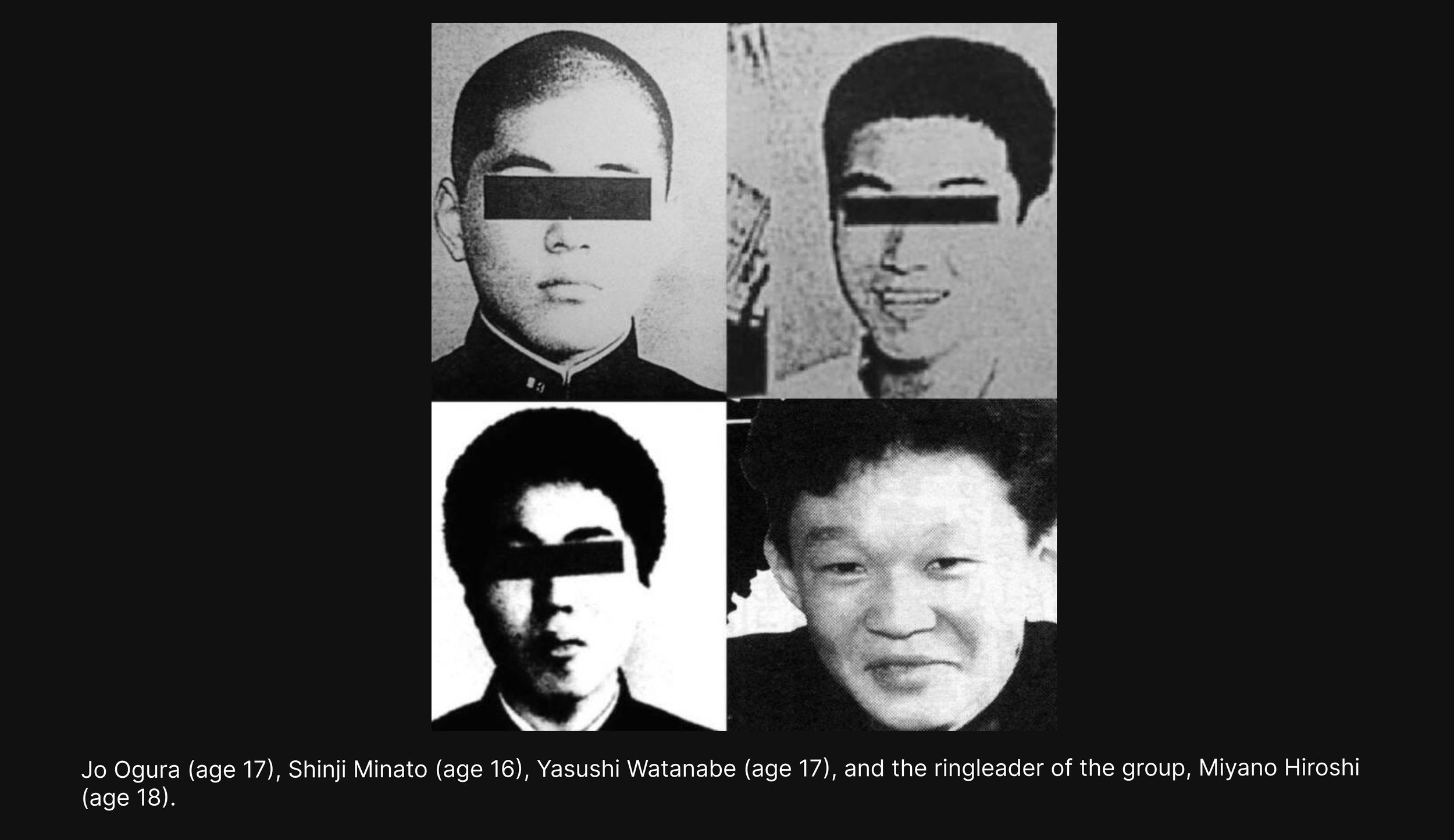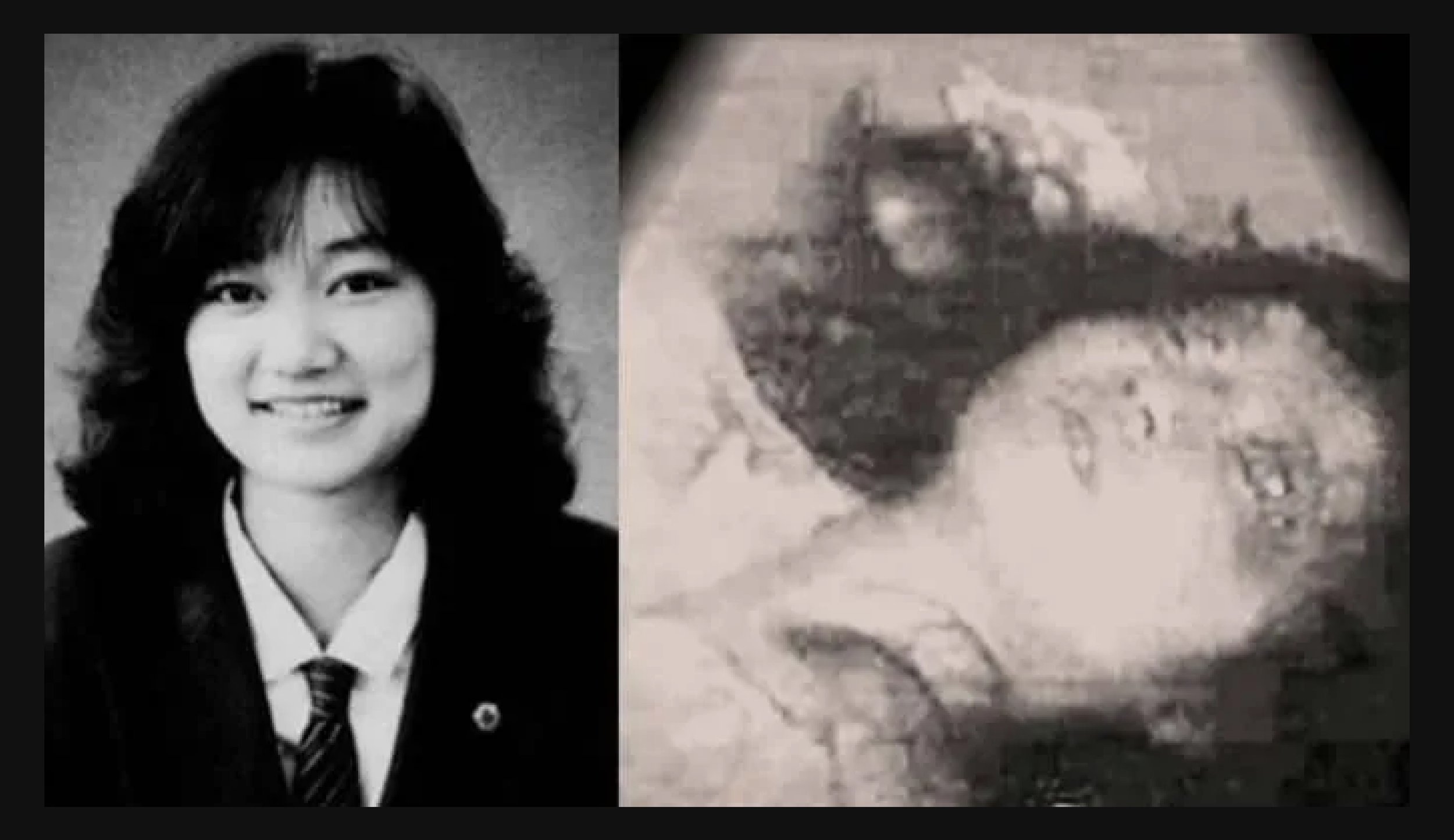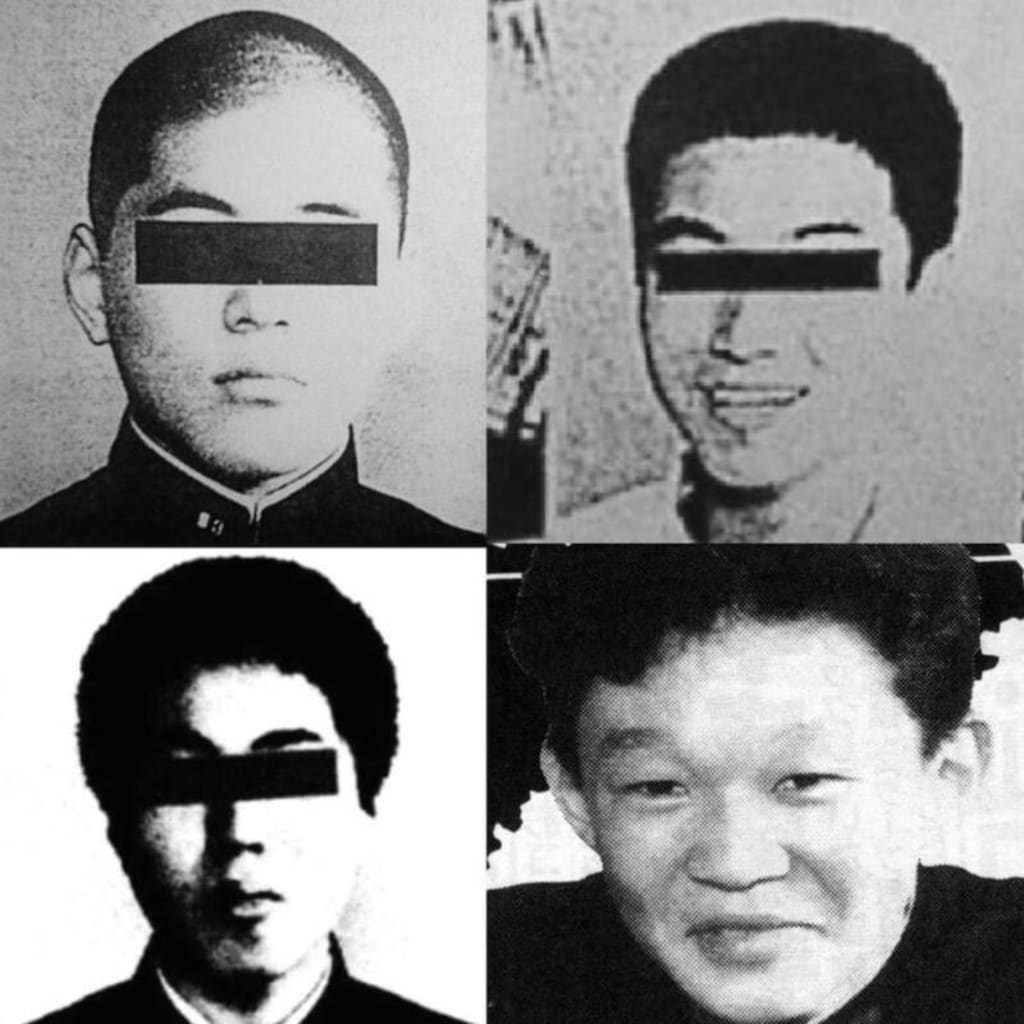The Junko Furuta Case: A Chilling Tale Of Unspeakable Cruelty
The Junko Furuta case stands as one of the most horrific and widely discussed crimes in modern Japanese history, a chilling testament to the depths of human depravity. This harrowing incident, involving the abduction, torture, and murder of a young high school student, left an indelible scar on the nation's psyche and continues to provoke profound shock and disbelief decades later. It serves as a stark reminder of the vulnerabilities young individuals face and the critical importance of societal vigilance against extreme violence.
The details of what Junko Furuta endured over 40 agonizing days are almost too gruesome to recount, yet understanding the full scope of this tragedy is essential. It's a story that compels us to confront uncomfortable truths about human nature, the failures of community oversight, and the pursuit of justice in the face of unimaginable cruelty. This article delves deep into the Junko Furuta case, exploring the events, the individuals involved, the societal impact, and the enduring lessons we must glean from such a dark chapter.
Table of Contents
- 1. Who Was Junko Furuta?
- 2. The Abduction and Initial Captivity
- 3. Forty Days of Unimaginable Horror
- 4. The Discovery and Aftermath
- 5. The Legal Proceedings and Sentences
- 6. Societal Impact and Lessons Learned from the Junko Furuta Case
- 7. Preventing Future Tragedies: Protecting Vulnerable Youth
- 8. Conclusion
1. Who Was Junko Furuta?
Junko Furuta was a Japanese high school student from Misato City in Tokyo, a seemingly ordinary teenager with a life full of promise. Born on November 22, 1971, she was 17 years old at the time of her abduction in 1988. Like many young people her age, Junko was likely focused on her studies, friends, and the exciting prospect of her future. Her life, however, was tragically cut short by an act of monstrous cruelty that would forever link her name to one of Japan's most infamous criminal cases. Her story is not just about a crime; it's about a young life brutally extinguished and the profound shockwaves it sent through society.
Personal Data: Junko Furuta
| Detail | Information |
|---|---|
| Full Name | Junko Furuta (古田 順子) |
| Date of Birth | November 22, 1971 |
| Age at Time of Abduction | 17 years old |
| Hometown | Misato City, Saitama Prefecture (part of Tokyo metropolitan area) |
| Occupation | High School Student |
| Date of Abduction | November 25, 1988 |
| Date of Death | January 4, 1989 |
| Cause of Death | Extreme torture and internal injuries |
2. The Abduction and Initial Captivity
The nightmare for Junko Furuta began on November 25, 1988, just days after her 17th birthday. While cycling home from her part-time job, she was forcibly abducted by a 17-year-old male, Hiroshi Miyano, who was known to be a member of a local yakuza gang. This initial act of violence marked the beginning of an unimaginable ordeal that would span 40 days.
Following her abduction, Junko Furuta was held captive in the home of Shinji Minato, another of the primary perpetrators. This house, located in Adachi, Tokyo, became the site of her prolonged suffering. The initial captors, Miyano, Minato, and two other teenagers, Yasushi Ogura and Jo Ogura (no relation), quickly established a reign of terror. They threatened Junko's family, warning her that if she tried to escape or reveal their identities, her family would be harmed. This threat, combined with immediate physical abuse, effectively broke her spirit and trapped her in a horrifying reality. The ringleader, Hiroshi Miyano, exerted significant control over the group, and it was under his influence that the situation rapidly escalated from a simple abduction to a systematic campaign of torture.
3. Forty Days of Unimaginable Horror
Once Junko Furuta was held captive in Shinji Minato's home, the ringleader began inviting others to the house to participate in the sexual assault and torture of the teen. What unfolded over the next 40 days defies comprehension, a period of sustained, unimaginable brutality that pushed the boundaries of human cruelty. Junko was subjected to the most horrendous torture and abuse until her monstrous death. Her tormentors, primarily the four teenagers, but also others who were invited to participate, treated her not as a human being, but as an object for their sadistic desires.
3.1. The Cycle of Abuse
The abuse inflicted upon Junko Furuta was relentless and systematic. It encompassed every conceivable form of torment, designed to break her spirit and body. She was starved, deprived of sleep, and forced to consume various substances, including her own urine and insects. The perpetrators physically abused her, striking her with various objects, including golf clubs and barbells, leading to severe injuries, including broken bones and internal bleeding. Her body became a canvas for their brutality, accumulating hundreds of injuries.
The sheer duration of the abuse meant that Junko's body was in a constant state of pain and decay. Even as she suffered from severe injuries, she was denied medical attention, and her wounds were left to fester, leading to infections that further debilitated her. This prolonged suffering ensured that she was in a perpetual state of agony, making escape or resistance impossible.
3.2. The Role of Accomplices
While four teenagers were the primary perpetrators, the fact that Junko Furuta was held captive in Shinji Minato's home, where his parents were present, added another layer of disturbing complicity. Though the parents claimed ignorance or fear of their son and his associates, their inaction in reporting the crime or intervening raised serious questions about their responsibility. Furthermore, as the ringleader invited others to the house, the number of individuals aware of, or participating in, the abuse grew. This expansion of the circle of knowledge and involvement highlights a disturbing societal breakdown, where fear, apathy, or complicity allowed such atrocities to continue unchecked.
3.3. The Unspeakable Acts
Beyond the physical torture, Junko Furuta was subjected to repeated sexual assault by multiple individuals. The sheer number of rapes, often involving foreign objects, was staggering and contributed significantly to her physical and psychological deterioration. The perpetrators' actions went beyond mere sexual violence; they were acts of extreme degradation, designed to strip Junko of her dignity and humanity. These acts were often performed in front of each other, creating a perverse dynamic of collective sadism. The details of these acts, later revealed in court, were so shocking that they caused widespread public revulsion and underscored the extreme depravity of the perpetrators.
The cumulative effect of starvation, dehydration, continuous physical beatings, severe sexual assault, and lack of medical care eventually led to Junko's death on January 4, 1989. Her body, ravaged by 40 days of unimaginable torment, finally succumbed. The official cause of death was attributed to multiple internal injuries and organ failure, a direct result of the sustained and brutal torture she endured.
4. The Discovery and Aftermath
The discovery of Junko Furuta's body was as horrifying as her ordeal. On January 4, 1989, after her death, the perpetrators, in a desperate attempt to conceal their monstrous crime, encased her body in concrete inside a drum. They then filled the drum with dirt and dumped it in a vacant lot in Koto, Tokyo. However, their heinous act was soon uncovered.
The investigation began when police, following a tip-off or through their own intelligence, began questioning Hiroshi Miyano regarding another unrelated incident. During questioning, Miyano, under pressure, eventually confessed to the murder of Junko Furuta and revealed the location of her body. The discovery of the drum and its contents sent shockwaves through the police force and, subsequently, the entire nation. The condition of Junko's body was so severe that it was initially difficult to identify her, a testament to the extreme abuse she had suffered.
The immediate aftermath saw the swift arrest of the four primary perpetrators: Hiroshi Miyano, Shinji Minato, Yasushi Ogura, and Jo Ogura. Their ages, all minors at the time of the crime, added another layer of complexity and horror to the case, challenging public perceptions of juvenile delinquency. The revelation of the sheer brutality and duration of the torture Junko Furuta endured ignited a firestorm of public outrage and grief across Japan. Media coverage was extensive, detailing the gruesome facts and sparking widespread calls for justice and reform. The case became a symbol of extreme violence and a catalyst for national introspection.
5. The Legal Proceedings and Sentences
The legal proceedings following the discovery of Junko Furuta's body were closely watched by the public. Due to the ages of the perpetrators, who were all minors at the time of the crime (ranging from 16 to 18 years old), their identities were initially protected under Japanese juvenile law. However, the extreme nature of the crime led to an unprecedented public outcry, eventually resulting in the unofficial leaking of their names, which were then widely circulated. This public pressure highlighted the tension between juvenile rehabilitation laws and the demand for severe punishment for heinous crimes.
5.1. The Perpetrators and Their Fates
The four main perpetrators were tried in family court and later in adult court due to the severity of their crimes.
- Hiroshi Miyano (then 17): Identified as the ringleader, Miyano received the longest sentence. He was initially sentenced to 17 years in prison, which was later increased to 20 years upon appeal. He was released in 2004 but has reportedly been re-arrested multiple times for other offenses, indicating a continued pattern of criminal behavior.
- Shinji Minato (then 18): In whose home Junko Furuta was held captive, received a sentence of 13 years in prison. He was released in 2002.
- Yasushi Ogura (then 17): Sentenced to 10 years in prison, he was released in 1999.
- Jo Ogura (then 16): The youngest of the primary four, received the shortest sentence among them, 8 years in prison. He was released in 1996.
5.2. Public Outcry and Calls for Justice
The public reaction to the sentences was one of profound disappointment and anger. Many felt that the justice system had failed Junko Furuta and her family. The perceived leniency of the sentences, particularly for individuals who had committed such unspeakable acts, fueled a national debate about juvenile crime, rehabilitation versus punishment, and the need for stronger deterrents.
The outrage was so intense that it led to significant pressure on the media to reveal the names of the perpetrators, despite the juvenile law. While direct official publication was avoided, their names were widely circulated through various unofficial channels, reflecting the public's desire for accountability and the inability to reconcile the horrific crime with the perpetrators' protected status as minors. This case became a significant factor in subsequent discussions and reforms regarding Japan's juvenile justice system, pushing for harsher penalties for serious crimes committed by minors. The memory of the Junko Furuta case continues to influence public discourse on crime and punishment in Japan.
6. Societal Impact and Lessons Learned from the Junko Furuta Case
The Junko Furuta case left an indelible mark on Japanese society, serving as a stark and horrifying reminder of the potential for extreme human cruelty. Its impact resonated far beyond the courtroom, prompting widespread introspection and debate on various societal issues.
Firstly, it ignited a fierce debate about Japan's juvenile justice system. The public struggled to reconcile the horrific nature of the crime with the relatively lenient sentences handed down to the perpetrators, who were minors. This led to persistent calls for reform, with many arguing for harsher penalties for serious crimes committed by juveniles and a greater emphasis on punishment rather than solely rehabilitation. While direct legislative changes specifically tied to the Junko Furuta case were complex, the public sentiment it generated undoubtedly influenced subsequent policy discussions and amendments to juvenile law.
Secondly, the case exposed disturbing aspects of community and family responsibility. The fact that Junko Furuta was held captive in a residential home for 40 days, with adults (Shinji Minato's parents) present and seemingly unaware or unwilling to intervene, shocked the nation. This raised uncomfortable questions about neighborhood vigilance, parental authority, and the collective responsibility to protect vulnerable individuals. It highlighted the potential for fear or indifference to allow evil to flourish unchecked, prompting discussions about how communities can better identify and respond to signs of abuse or distress.
Thirdly, the Junko Furuta case became a symbol of extreme violence against women and children. It underscored the vulnerability of young individuals to predators and the importance of personal safety education. The sheer brutality of the torture also forced society to confront the darkest aspects of human nature, leading to a renewed focus on understanding and preventing such heinous acts.
Finally, the case had a profound psychological impact. For many, it shattered a sense of security and normalcy, revealing a hidden underbelly of depravity. The details, widely reported, instilled a collective trauma and a heightened awareness of the potential for evil even within seemingly ordinary communities. The Junko Furuta case remains a cautionary tale, a permanent fixture in the collective memory, reminding society of the constant need for vigilance, empathy, and robust systems of justice and protection.
7. Preventing Future Tragedies: Protecting Vulnerable Youth
The Junko Furuta case, while a historical tragedy, offers crucial lessons for preventing similar horrors in the future. Protecting vulnerable youth requires a multi-faceted approach involving individuals, families, communities, and legal systems.
Key strategies include:
- Enhanced Awareness and Education: Educating young people about personal safety, recognizing dangerous situations, and understanding the importance of reporting suspicious activities is paramount. This includes digital safety and awareness of online predators.
- Strengthening Community Watch and Support Networks: Communities must foster environments where neighbors look out for one another. Encouraging open communication and establishing clear channels for reporting concerns about child welfare or unusual activities can help prevent isolated incidents from escalating. The Junko Furuta case tragically demonstrated the consequences of a lack of intervention from those nearby.
- Empowering Parents and Guardians: Parents need resources and support to monitor their children's activities, friends, and emotional well-being. Understanding the signs of abuse or involvement in dangerous groups is crucial.
- Robust Juvenile Justice Reform: While balancing rehabilitation and punishment, legal systems must ensure that severe crimes committed by minors are met with appropriate and deterrent sentences. The public outcry over the Junko Furuta case highlighted the need for the justice system to reflect societal demands for accountability for heinous acts.
- Mental Health Support for Troubled Youth: Addressing underlying psychological issues in young individuals who exhibit violent or antisocial tendencies is critical. Early intervention and access to mental health services can potentially divert individuals from a path of criminality.
- Media Responsibility: While reporting on such cases is vital for public awareness, responsible journalism that avoids sensationalism while conveying the gravity of the crime is important. This helps ensure that the focus remains on justice and prevention rather than exploitation.
8. Conclusion
The Junko Furuta case remains a harrowing chapter in Japan's criminal history, a stark reminder of the extreme cruelty that can manifest within society. The 40 days of unimaginable torture and abuse that Junko Furuta endured underscore the profound vulnerability of young individuals and the critical importance of collective vigilance. While the passage of time may dim the immediate shock, the lessons learned from this tragedy—regarding juvenile justice, community responsibility, and the imperative to protect the innocent—continue to resonate.
It is through remembering Junko Furuta and the unspeakable acts committed against her that we reinforce our commitment to justice, empathy, and the prevention of future horrors. Her story serves as a permanent call to action, urging us to be more aware, more proactive, and more compassionate in safeguarding our communities.
We encourage you to reflect on the insights shared in this article. What are your thoughts on the societal impact of such cases? Share your comments below, and consider sharing this article to help raise awareness. For more in-depth discussions on crime, justice, and societal issues, explore other articles on our site.
.jpg)
.jpg?format=2500w)

Detail Author:
- Name : Prof. Frederique Ruecker MD
- Username : hpowlowski
- Email : wcollins@hotmail.com
- Birthdate : 1974-09-14
- Address : 5121 Tillman Bypass Suite 620 East Mathildeshire, NJ 00615-7224
- Phone : 1-270-390-2850
- Company : Ratke, Effertz and Larson
- Job : Archeologist
- Bio : Perferendis illum provident omnis animi. Voluptatem aliquam non nihil beatae rerum velit. Autem accusantium vitae facilis ut non voluptatem. Veniam adipisci qui veniam et.
Socials
tiktok:
- url : https://tiktok.com/@ernserk
- username : ernserk
- bio : Non in at aut suscipit omnis pariatur doloremque porro.
- followers : 3768
- following : 891
linkedin:
- url : https://linkedin.com/in/kiana_ernser
- username : kiana_ernser
- bio : Et quis corporis aut ullam possimus.
- followers : 3756
- following : 1421
facebook:
- url : https://facebook.com/kiana_dev
- username : kiana_dev
- bio : Maxime sit quia autem eum odio praesentium.
- followers : 4657
- following : 161
twitter:
- url : https://twitter.com/kiana.ernser
- username : kiana.ernser
- bio : Et voluptate esse neque iste nihil molestiae. Dolorem deserunt laboriosam quo. Voluptas sint ut modi unde. Atque rem beatae explicabo quaerat est provident.
- followers : 5272
- following : 2771
